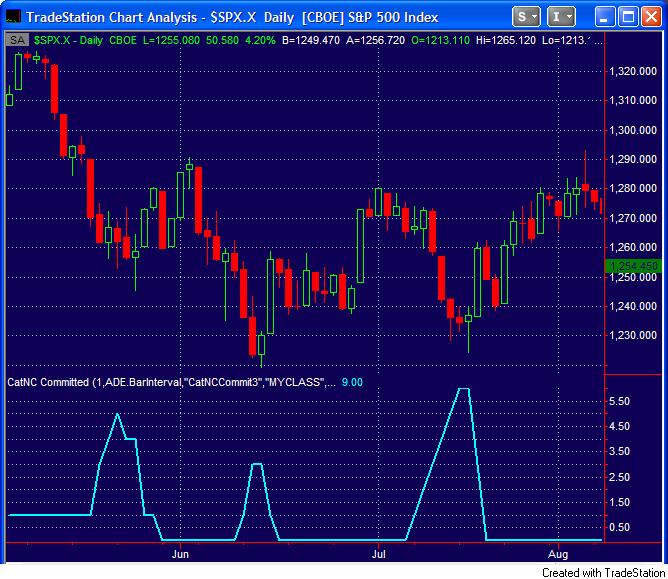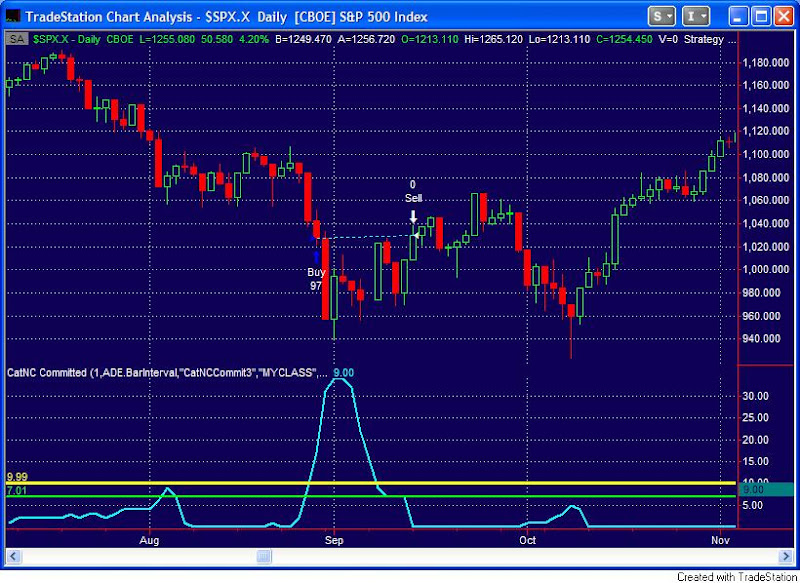I received an interesting question from a subscriber about the lack of action in the CBI and whether there have been successful bottoms in past that occurred without a spike in the Capitulative Breadth Indictor. With moves to 10 or higher in November, January, March, and July it would seem curious we only reached 5 last week.
While somewhat rare, there have been bottoms that did not see the CBI reading reach 7 or higher at any point in the downmove. The most recent was the May-June selloff in 2006, which peaked at 5 on the May leg down and only reached 3 on the June leg down. This can be seen in the chart below. The CBI is the indicator in the bottom pane. The S&P 500 is charted on top.
The one that might seem most similar to the current situation is October of 1998. After spiking huge in August (similar to July of this year), it hardly budged on the October leg down, peaking at 5.


